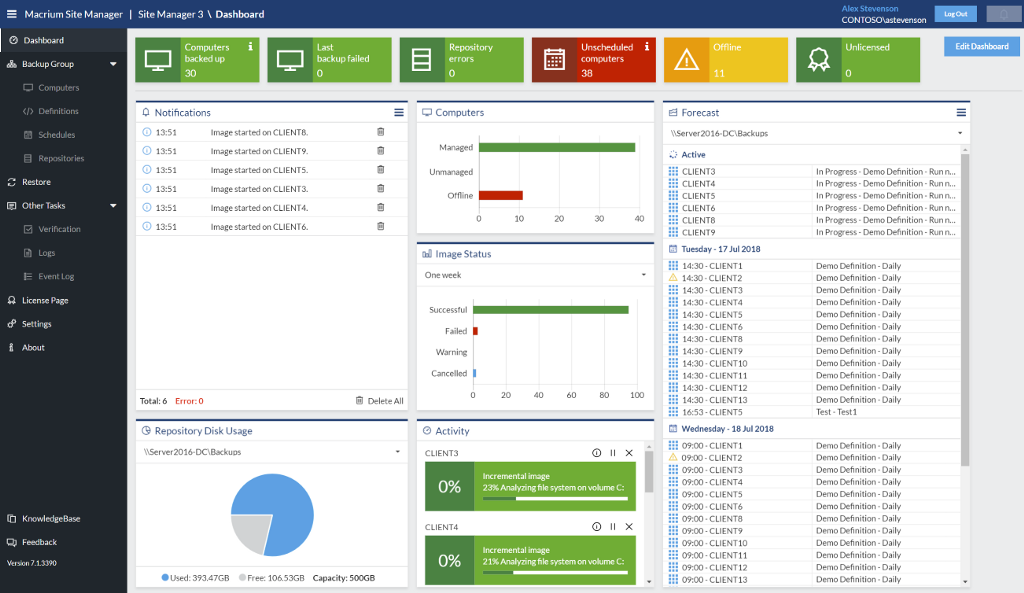Site Manager Update

Macrium Site Manager Updates

In March we discussed the Macrium Central Management Consoles. One of he consoles described in this blog post was Site Manager:
https://blog.macrium.com/the-macrium-central-management-consoles-d3418f2c736e
The latest version of Site Manager introduces new features, let’s explore how these can help you manage your backups.
Communication
Previously, Site Manager used MSMQ (Microsoft Message Queuing) to manage the messages that were being sent between Agents and Site Managers. This method required several steps to be taken by the user to ensure that communication could happen, such as configuring firewalls for incoming MSMQ traffic:

The latest update to Site Manager removes the reliance on MSMQ for communication. Site Manager now listens on an incoming TCP/IP port, each Agent then initiates a connection, once established, all communication will take place on this connection. This requires less interaction to configure, simplifying the steps required.

This change comes with several benefits:
Improved support for different network configurations — The highest source of support requests we received involved Agent and Site Manager communications over a network. The latest Site Manager only requires the server to be accessible by the agent. Site Manager will work more smoothly on a variety of network configurations, due to the simplicity of the new communication mechanisms.
Simplified network configuration for clients — Since all communication is now initiated from the Agent, there are no firewall rules to configure or special rules that need to be set up on the Agent. You can simply install the Agent, tell it which Site Manager to communicate with, and start managing your Agent.
Enabling Future Features — Since the new communication system is more flexible, we have greater control of its use for future development. This allows exciting projects that would not be possible using communication methods based on MSMQ.
Agent Configuration Tool
This change in communication comes with a streamlined tool for your Agents to use when connecting to the Site Manager and troubleshooting any issues that might occur.

This tool can test connections to a Site Manager server, enable remote installations of the Agent and even includes additional logging for troubleshooting purposes. This makes it easier to resolve any issues that may occur between your Agent and Site Manager.
Active Directory Integration
Previously, to access Site Manager you must either be an administrator of the computer that Site Manager is installed on, or on the Active Directory domain that the computer is part of, this was for security purposes.
The latest Site Manager allows easy configuration of access rights for your Site Manager. With integration of Active Directory comes the ability to specify individual users or groups to access Site Manager, without having to give them domain/local administrator privileges.


This also enables users to set permissions for accounts on different domains to the one Site Manager server is a part of. These Active Directory integration updates make it easy to manage exactly who you want to be able to access Site Manager.
Minor Changes:
- Added options to control how Agents are automatically updated
- Updated email sending to use TLS 1.1
- Added CSV export to ‘Computers’ table
- Reduced number of Windows Event Log Login audit events caused by repository access
Contact us for more information, for a demonstration,
or download a trial of Site Manager.


